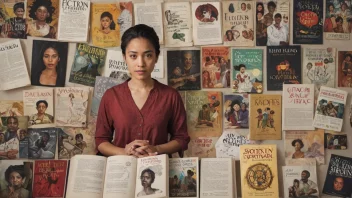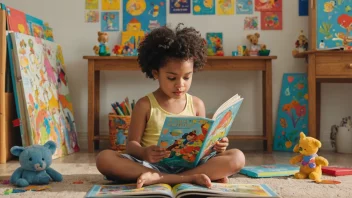In the quest to nurture emotional intelligence in children, educators and parents often find themselves evaluating the most effective methods for teaching empathy, self-awareness, and social skills. Two prominent approaches stand out: storytelling and traditional teaching methods. Storytelling, rich in narrative and imagination, captivates young minds, while traditional teaching relies on structured lessons and factual knowledge. This article aims to compare these two approaches, examining their pros and cons, and ultimately determining which method may be more effective in enhancing emotional intelligence in children.
Understanding Emotional Intelligence
Before diving into the comparison, it is essential to define emotional intelligence (EI). EI refers to the ability to recognize, understand, and manage our own emotions, as well as the ability to recognize and influence the emotions of others. In childhood, developing EI is crucial as it lays the foundation for effective communication, conflict resolution, and building meaningful relationships.
The Role of Storytelling
Storytelling has been a fundamental part of human culture for centuries. It is a powerful tool that can transport children into different worlds, allowing them to experience emotions and situations vicariously. Here are some of the pros and cons of using storytelling as a method for enhancing emotional intelligence:
Pros of Storytelling
- Engagement: Storytelling captures children's attention, making learning enjoyable and memorable.
- Empathy Development: Through characters' experiences, children can develop empathy by understanding different perspectives and emotions.
- Imagination and Creativity: Storytelling encourages imaginative thinking, allowing children to explore hypothetical situations and outcomes.
- Cultural Awareness: Stories expose children to diverse cultures and experiences, fostering a broader understanding of the world.
Cons of Storytelling
- Lack of Structure: Storytelling can sometimes lack the structured learning environment that some children may need to thrive.
- Interpretation Variability: Children may interpret stories differently, leading to misunderstandings of the emotional lessons intended by the storyteller.
The Role of Traditional Teaching
Traditional teaching methods emphasize structured lessons, factual knowledge, and standardized assessments. This approach has been the backbone of educational systems for decades. Here are the pros and cons of traditional teaching in relation to enhancing emotional intelligence:
Pros of Traditional Teaching
- Structure and Routine: Children benefit from a predictable learning environment that helps them focus and absorb information.
- Clear Objectives: Traditional teaching often has specific learning objectives, making it easier to measure progress and achievement.
- Skill Development: This method can effectively teach specific skills, including critical thinking and problem-solving, which are essential for emotional intelligence.
Cons of Traditional Teaching
- Limited Emotional Exploration: Traditional methods may not provide enough opportunities for children to explore and discuss emotions.
- Pressure and Anxiety: The focus on assessments and grades can create stress, which may hinder emotional development.
Comparative Analysis
Now that we have explored the pros and cons of both storytelling and traditional teaching, let’s compare them directly across key aspects:
Engagement and Interest
Storytelling tends to engage children more effectively than traditional teaching. A well-told story can hold a child’s attention for extended periods, whereas traditional methods may struggle to keep students captivated, especially if the material is dry or disconnected from their lives.
Emotional Connection
Storytelling excels in fostering emotional connections. When children hear stories, they often relate to characters and situations, which helps them understand their own emotions and the emotions of others. In contrast, traditional teaching may fail to create such connections, focusing more on rote memorization rather than emotional exploration.
Skill Acquisition
Traditional teaching has the upper hand when it comes to teaching specific skills and knowledge. Children learn foundational concepts that are essential for further academic success. However, storytelling can complement this by weaving emotional lessons into these skills, allowing for a more holistic learning experience.
Assessment of Learning
Traditional teaching provides clear methods for assessing students' learning and progress through tests and quizzes. Meanwhile, assessing the impact of storytelling on emotional intelligence can be more subjective and challenging to measure quantitatively.
Conclusion
In conclusion, both storytelling and traditional teaching have valuable roles in enhancing emotional intelligence in children. Storytelling excels in engaging young readers and fostering empathy and emotional exploration, while traditional teaching provides the structure and foundational skills necessary for academic success. An integrated approach, using storytelling to complement traditional methods, may prove to be the most effective strategy for nurturing emotional intelligence in children. By combining the imaginative and emotional depth of storytelling with the clear objectives of traditional teaching, educators and parents can create a rich learning environment that equips children with the emotional and intellectual tools they need for a successful future.






